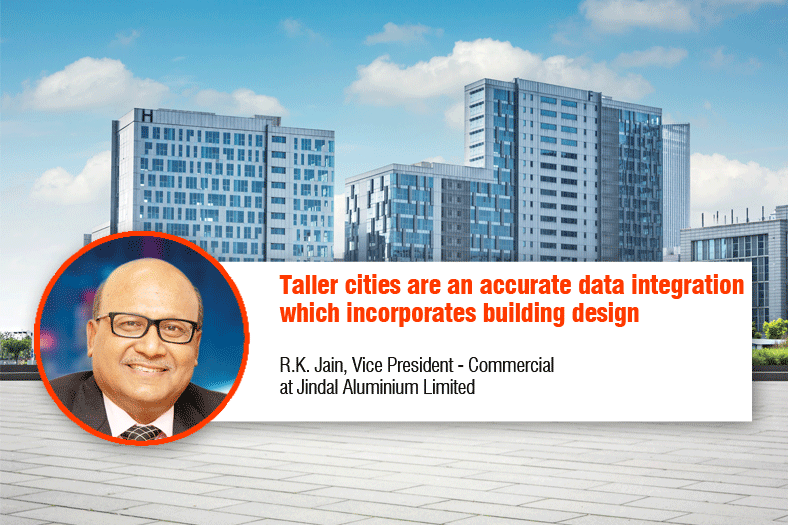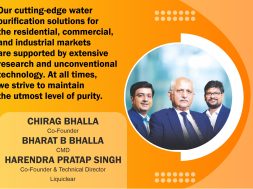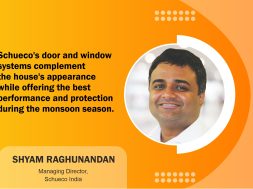Taller cities are an accurate data integration which incorporates building design

What the industry needs today for high rise buildings is an accurate data integration which incorporates building design. Right from production to installation, there must be risk controls in check to avoid any challenges during installation.
What are the core challenges in facade installation in high rise buildings?
As our cities continue to grow taller with the emergence of high-rise buildings, the process of façade installation is becoming more complex. The technicalities of using facades in high-rise buildings are far more elaborate. With an increase in every floor of the building, challenges for installation also increases. Companies are therefore investing more time and resources in planning for these installations in order to counter these challenges.
Some of the key challenges include:
- Increase in mechanical constraints which increases with the number of floorsTherefore with an increase in height of the installation, the constraints also increases.
- As you move on to the top floors of a high-rise, the buildings’ resistance towards wind or seismic movements increases, which therefore complicates the process of installation. Hence, one has to be very careful while selecting the profiles and fixtures for installation at such a height.
- Adherence to fire safety rules and regulation is also essential in façade installation. Utmost care must be taken to limit the hazards of a fire by choosing the right materials and making sure the fit is right. Safety regulations are therefore becoming more rigorous across countries.
- Today, companies prefer customised facades for their buildings and the level of complexity increases with an increase in the level of customisation. The process of installation of customised facades is therefore a big challenge. Significant investment in resources is spent in façade cleaning and maintenance as it can be only done from the exteriors by the trained professionals.
There are various ways to deal with these core challenges in façade installation. A façade installation requires expertise and therefore utmost planning is required by architects for a seamless process. What the industry needs today for our taller cities is an accurate data integration which incorporates building design. Right from production to installation, there must be risk controls in check to avoid any challenges during installation.
How does the climatic condition effect the selection of facades?
Facades are now at the core of sustainable buildings and climate plays a very important role in the production and selection of facades. Architects and builders are testing and implementing various design strategies when it comes to customizing facades according to the different climatic zones. It is essential to choose the right façade in order to minimize the impact on the environment as well as the energy consumption of the building, besides safety which should be considered utmost. Countries which remain cold throughout the year, heat retention and insulation become key parameters for the selection of a façade. Similarly, in hotter regions, protection from direct exposure to sun and radiation is important. As you can see, with a shift in climates zones, the criteria for choosing a façade differ.
To battle the need for customized facades according to climate conditions, builders are now increasingly resorting to high performance sustainable facades. With an array of benefits attributed to using high performance facades, this trend is becoming increasingly important among the architects. These sustainable facades allow proper flow of natural light, improve insulation which prevents heat transfer, prevent moisture to pass through the façade and simultaneously cool down the interiors of the building. Aluminium is becoming a preferred metal in facades owing to its versatile nature.
A large number of builders and architects have realized the potential of aluminium and are increasingly looking at making aluminium facades, a core components of their buildings. We have seen a rise in companies switching to sustainable and environment friendly facades to ensure that they leave behind low carbon footprint.
What is the concept of green facades? How different is it from the regular facades?
Global economies today understand the need to battle energy crisis and adopt sustainable development as a part of their progress. Green infrastructure has therefore become an important innovation in the building and construction industry. Green facades are commonly referred to as vertical gardens, support plants and allows them to grow on it. Green facades are frequently found in the countries where the temperature remains high round the year as it ensures optimum temperature inside the buildings. The benefits of using green facades are plenty. Not only do they provide better atmosphere, cancellation of external noise and natural beauty but they also require lesser costs and maintenance.
Architecturally designed green facades are very appealing to the eye and are often used to enhance the aesthetic appeal of the building. The concept of green facades is more relevant today than ever before as it improves the environment around the building while simultaneously preserving the biodiversity and habitat.
Green facades are not different from regular facades. Regular facades that house plants or eco-friendly solutions are called green facades and hence only refer to the external appearance of a regular façade.
What steps need to be taken to ensure the facade is well maintained? When does a facade have to be renovated?
Since a façade is the most visible element of a building, it is extremely important that it is clean and well maintained. Regular maintenance of facades ensures longer life span of the buildings while simultaneously maintaining the aesthetic appeal.
Post installation of facades, various checks must be done to check the panels, fixings, fire breaks, wall anchors and inspectionof fixtures and components that may have come loose during the course of time. Removing dirt, mould and other contaminants regularly will reduce the damage and result in lower maintenance costs. Yearly inspections of the facades will also ensure timely detection of defects and will ease the maintenance process.
Investing in maintenance of facades is very important to ensure maintaining the building at the lowest cost avoiding the high cost of emergency repairs.
R.K. Jain, Vice President – Commercial at Jindal Aluminium Limited
8
Cookie Consent
We use cookies to personalize your experience. By continuing to visit this website you agree to our Terms & Conditions, Privacy Policy and Cookie Policy.









